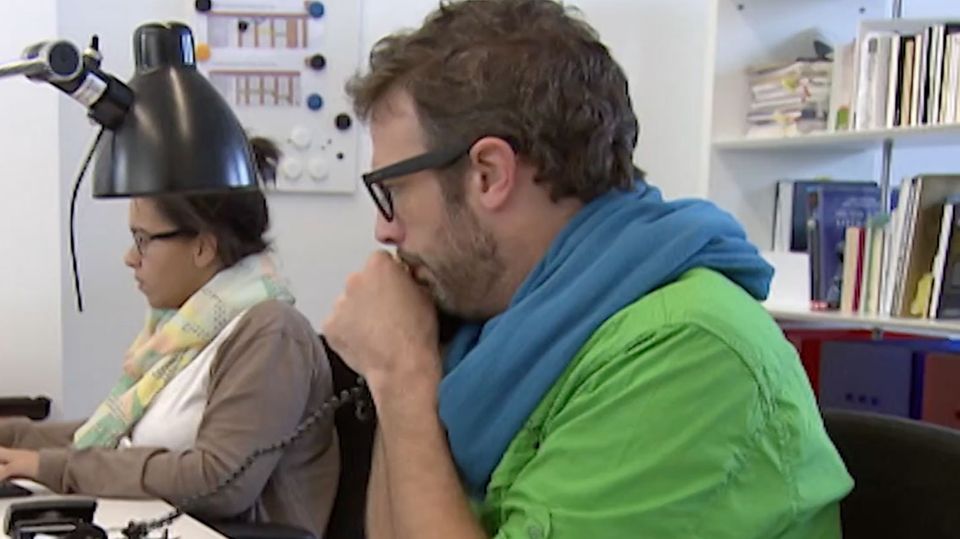Anyone who is ill belongs in bed and not in the office. But that’s exactly what many people find difficult. They still drag themselves to work. The phenomenon is called presenteeism – women in particular are prone to it.
One is slouching in the office chair because her period is trying to force her into the fetal position. The migraine roars at the other in the meeting louder than the boss. Many people drag to work even though they are actually ill. The phenomenon is called presenteeism – and according to experts, neither the sick employees nor the employers are helped by this. A market with digital offers, especially for mental health, is now developing.
Every second employee (51 percent) in Germany goes to work sick sometimes, often or very often, as the Institute for Occupational Health Advice from Constance found out for the Techniker Krankenkasse. According to the study published in autumn, women tend to be more presentee than their male colleagues.
“From an economic point of view, the costs caused by presenteeism are at least as high as the costs of absence due to illness,” says the Federal Institute for Occupational Safety and Health. According to the psychologist Simon Hahnzog, the proportion could be even larger. The costs that companies incur as a result of presenteeism are about twice as high as those caused by employees who are actually or allegedly ill. However, many companies are more worried about blue-collar workers and put more energy and money into the fight against this absenteeism.
Presenteeism: absent days increase
But Hahnzog makes it clear that anyone who works sick is only able to perform to a limited extent: “I’m there for eight hours, but I actually only work five.” Patients also made mistakes more often, which in turn led to follow-up costs: “It’s an avalanche effect,” says Hahnzog, who also advises companies on the subject. “If one makes a mistake, ten others may have to work an extra hour.” Significantly more accidents also happened when you went to work sick. And permanent, regular presenteeism increases the risk of cardiovascular diseases and mental disorders.
The number of days absent, mainly due to mental illnesses, has been increasing for years, says Simon Senner, chief physician at the Psychiatry Center in Reichenau/Konstanz. At the beginning of the corona pandemic, this trend stopped. “Fear of existence probably led to more people dragging themselves to work,” he says. At the latest since autumn 2020, the number of days absent has been increasing again.
Hahnzog assumes that the developments resulting from the pandemic will even aggravate the situation: “In the home office, the threshold has become much smaller, but to work. I’m not really sick, so I can switch to a zoom call for a moment .” The recovery time at home is reduced. Employees have been given even more personal responsibility, says Hahnzog. Managers, on the other hand, have less of an eye on the state of health of employees working from home.
According to the Occupational Health and Safety Act, employers are obliged to carry out a psychological risk assessment, as Senner emphasizes. In his estimation, however, only half did so. While safety measures such as spacers can be taken relatively easily in the case of physical dangers, it is more difficult in the case of mental stress. However, managers could learn how to recognize possible mental disorders and then how to address them appropriately and offer support.
mental health in the workplace
Following the trend, there are now many apps for people with mental stress, says Senner, who is also a member of the medical advisory board of Wellster, a provider of digital health platforms. “There is money for issues such as mental health in the workplace, and investments are made there.”
One example is the start-up Heyvie from Karlsruhe, which was founded in 2021 and aims to help people with migraines. Marius Krämer and Hady Daboul want to take the pain away from those affected with so-called neurocentric training. “The technology identifies areas of the brain that are not functioning optimally due to old patterns and injuries and aims to get rid of limitations in the shortest possible time,” the two explain.
A few exercises are available free of charge in the app. Depending on the desired scope and application, a four-week program for 19.99 euros or personalized training from 125 euros an hour are possible. The app was tested until March and hundreds have used it since then, says Krämer. In contrast to back pain, a widespread disease, migraines are still stigmatized from his point of view and tend to lead to presenteeism. “Almost everyone knows a headache.”

Market for digital aids is growing
Senner, in turn, advises Nilo Health. The offer is intended for companies, they could offer it to employees. For patients, there are offers for online therapy on the website helloeasy.de, for example for stress, anxiety or sleep problems.
The consumer center points out that there are no uniform quality criteria. “Most apps in this fast-moving market have not been scientifically tested for their usefulness.” So there could be helpful apps – but also those that, in the worst case, could cause damage because of incorrect measurements. It is advisable to discuss the issue with your family doctor.
The market is growing strongly, says chief physician Senner. The digital offers are an important aid and enable those affected to seek support without shame or other obstacles. “Digitization in healthcare makes it possible to make therapies more quickly and individually accessible to everyone.”
Source: Stern




